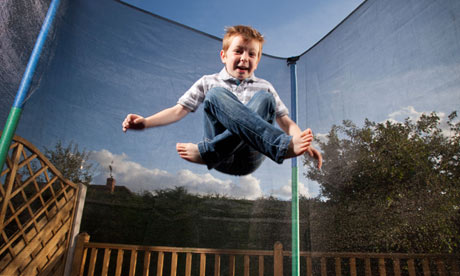
Could there be a better way to encourage kids to get exercise and fresh air? The trampoline is an increasingly popular addition to family gardens. Last summer the American Academy of Pediatrics (AAP), realising their widespread use, published a policy statement on the use of trampolines in childhood and adolescence. But instead of applauding the activity, it strongly discouraged their home use [pdf].
The risk of fractures and head, neck and spine injuries makes trampolining suitable only for structured training settings, says the AAP.
In the UK data on trampolining injuries is not routinely collected, but studies from A&E departments show injuries are not uncommon. One study over five months found 131 injuries in children, of which a third were fractures. Other injuries included sprains and cuts. The average age of the child was eight years old and there were an average of 2.7 children on the equipment at the time of the accidents. Other studies show similar patterns. So should you ditch the trampoline, or can you make it safer for your kids?
The solution
There are clear risk factors for trampolining injuries. The introduction of safety nets [pdf] has made little difference, because people don't assemble them properly – if they use them at all. In any case, the AAP warns such measures give a false sense of security.
Children under five are lighter and have less co-ordination to help them control landings, so have higher risk of fractures. The Royal Society for the Prevention of Accidents (Rospa) says children under the age of six should not be allowed on trampolines less than 20in high or with a diameter of more than 10ft.
Hard though it is to resist childish pleas of "my turn", more than two-thirds of injuries happen when there is more than one person on the trampoline. The lightest person is five times more likely to get hurt than anyone else, so only one person should be on at a time [pdf].
The most serious injuries are head injuries from falls or damage to the spinal cord in the neck (from failed somersaults, or over-bending or over-extending the neck). Spinal cord injuries can cause paralysis [pdf]. Somersaults and flipping should be banned unless the child has been properly coached.
A safety net can't replace active adult supervision. Children should be encouraged to bounce in the middle of the trampoline, not jump off and never to climb underneath the equipment. Trampolines should also be positioned properly – never on hard surfaces, or near trees or fences.
So if you do all these things, will your children be safe to bounce this summer? Rospa thinks they will – although it points out that all childhood play carries some level of risk.

